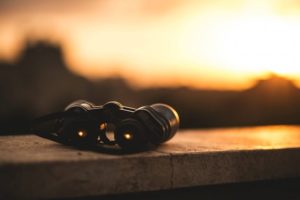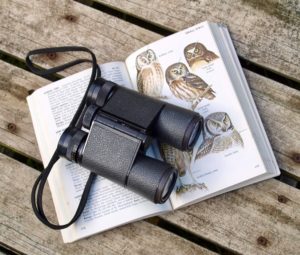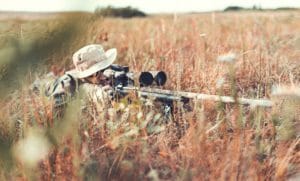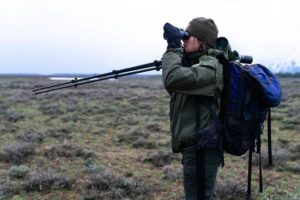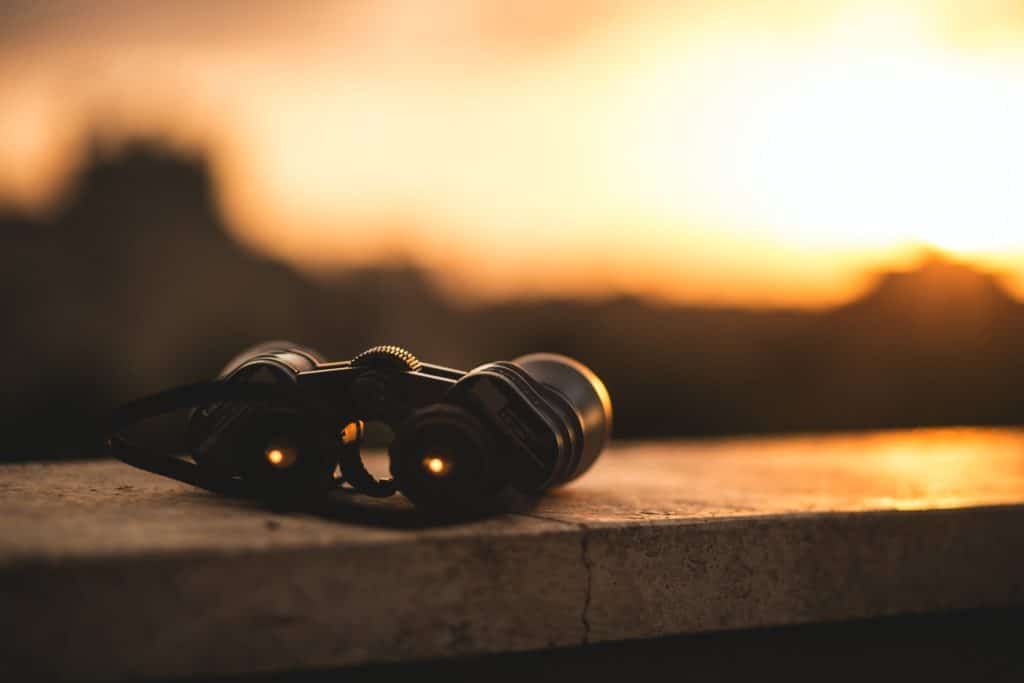You may think you need a telescope when taking up astronomy as your personal hobby, but it isn’t necessary.
Just a pair of binoculars can enable you to view what is in the sky. What do you think you can see with binoculars?
With binoculars, you can see details of planets, the moon, and even the brightest comets.
However, you may be pondering the meaning of the numbers on the binoculars and why these numbers are important.
Here is our guide to help you understand your binoculars and answer the question, “what do numbers on binoculars mean?”

Numbers on Binoculars
Congratulations if you have just purchased a new pair of binoculars. During the inspection, you will come across certain numbers on them. If you have your binoculars facing away from you, you will notice a model number.
The binoculars have two numbers separated by an ‘x.’ These numbers refer to the size and magnification power of the binoculars. The number coming after ‘x’ represents the lens size, while those coming before represents magnification.
For instance, if a pair of binoculars are labeled ‘9×42’, they have a magnifying power of 9 and a lens diameter of 42. The lens size informs you how large your binoculars are and how much light they can collect.
How the Numbers Affect Field of View
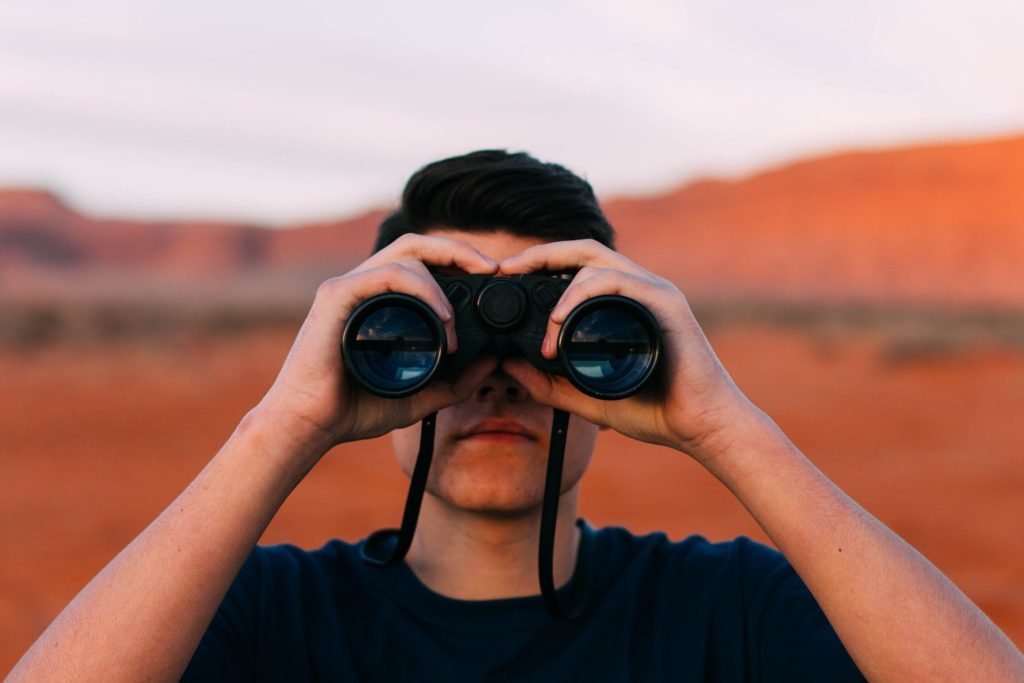
Having too much magnifying power is disadvantageous at times. It’s known to reduce the area of view at a given time; this area, called the field of view, is measured in meters or degrees. A smaller field of view means you will have to move your binoculars around a lot to find what you’re looking for.
The best field of view for your binoculars depends on the activity you want to engage in.
Hunting
You’ll need a wide field of view for hunting purposes as you’ll be watching moving targets. Hunters can choose a standard diameter of 42 millimeters which offers a wider field to track animals and works efficiently with poor visibility.
Hiking
You’ll need no magnification if you intend to use binoculars while hiking. It would help if you used a 10x or 12x to focus well on objects that are far from where you are. Although the field of view will be narrower, in this case, it’s just fine. You’ll have brightness and clarity with a lens diameter of at least 25 to 28 millimeters.
Bird Watching
A magnification of 8x is just good enough to help you track moving objects, but you’ll need a higher magnification power if you want to watch moving birds. Always go for a 40 or 42-millimeter diameter for efficient performance in low-light conditions.
Sporting Events
Binoculars will work well at sporting events with a magnification of 8x to 10x.
This ensures that you’re closer to where the action is on the pitch while at the same time maintaining a wide field of view. The lens should be about 42 millimeters if you want to see more detail.
How Magnification and Objective Lens Size Affects Focus
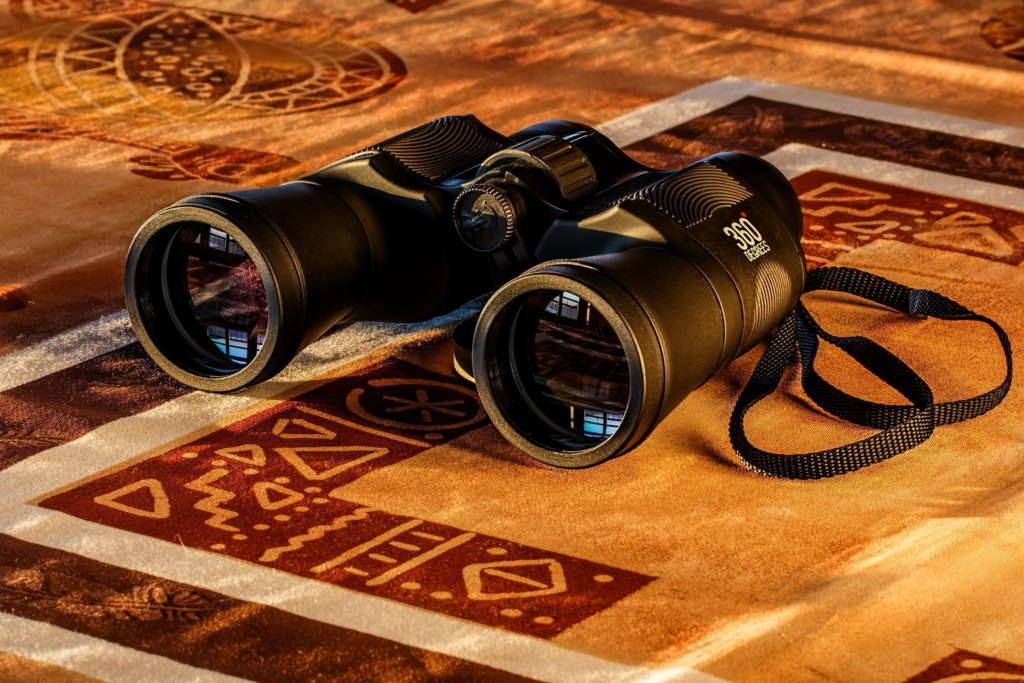
You need to take magnification and objective lens size into account to focus easily with your binoculars. The purpose of the lens is to collect light; this means that the bigger the objective lens, the more light it lets in. A larger objective lens size will offer clearer image quality with more detail.
On the other hand, magnification is the power that the lens possesses. Although magnification enables you to see more details of an object, too much will make it almost impossible to see the image’s sharpness. The image quality may start to get blurry.
The view can also be blurry at a high magnification power due to the Earth’s atmosphere. Wind and heat waves cause different temperatures to blend. It becomes a concern when magnification is above 60x. In binoculars, higher power is the most important feature.
Objective Lens Diameter
The objective lens diameter represents the ‘inside diameter’ of the lens and has its effective diameter set at 42 millimeters.
For binoculars with the same magnification, the one with a larger objective lens diameter collects more light. However, having a large objective lens diameter makes the pair of binoculars heavier and bigger.
Binoculars are grouped depending on the objective lens diameter, as shown below:
- Compact-type binoculars—Below 25 millimeters.
- Standard binoculars—30–49 millimeters.
- Business and Astronomical use—above 50 millimeters.
How the Numbers Affect the Size of an Exit Pupil
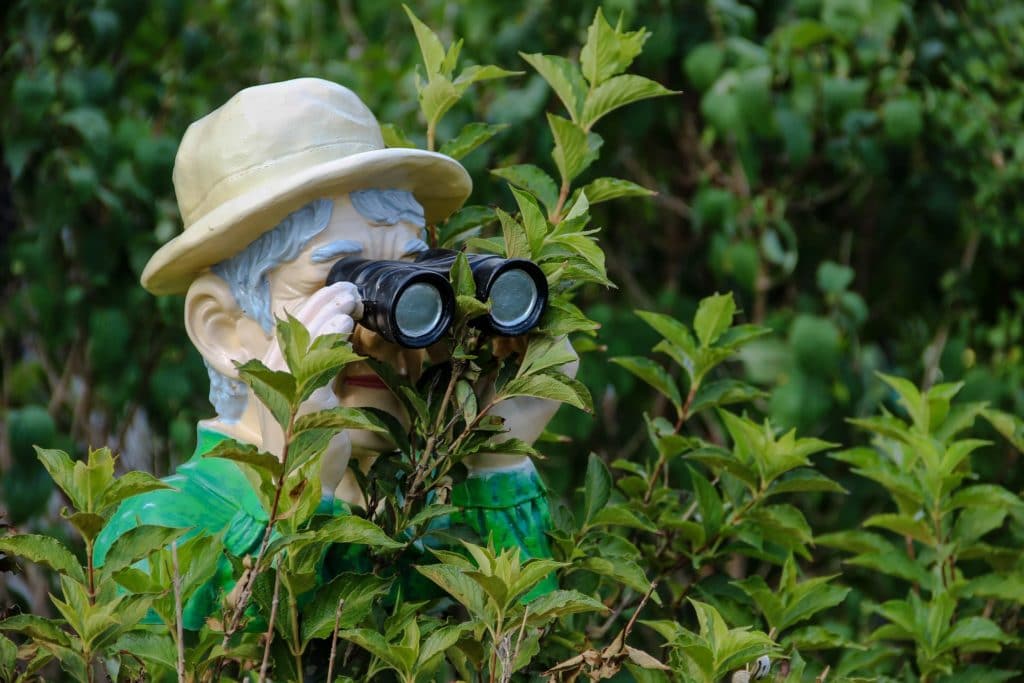
The exit pupil size is essential to consider in a pair of binoculars; this is the light beam’s width leaving the eyepieces of the binoculars. You get the exit pupil by dividing the objective lens diameter with the binocular’s magnification. For instance, 9×36 binoculars will have a 3-millimeter exit pupil.
What Is the Best Exit Pupil?
The exit pupil won’t matter if you’re trying to view wildlife or birds during daylight. However, at night, you should use an exit pupil of at least 6 millimeters.
Binoculars and Eye Relief
Those who wear glasses want to ensure that their binoculars provide excellent eye relief. Eye relief is the ideal distance that eyes should be kept from binoculars’ eyepiece. You will miss important details if your eyes are far from this distance.
To avoid seeing certain parts of the image and missing out on others, you should use a pair of binoculars with long eye relief. The eye relief should be at least 15 millimeters; the longer the eye relief, the better.
What About the Exit Pupil?
Although we have already introduced the exit pupil, it’s worth stating that it affects how the binoculars hold up in poor light conditions. The larger the exit pupil, the more light will reach your eye.
It’s important that you identify your pupil’s size to select the right exit pupil for your binoculars. It’s a fact that everyone has unique eyes that expand to different sizes depending on the light outside.
A large exit pupil will be too big for eyes with small pupils, causing you to miss some of the light entering the binoculars.
Measuring Your Pupils
It’s very easy to measure your pupils. Measuring your pupils enables you to understand why they change with changes in light.
- To let your eyes dilate, move from a bright room to a darker one.
- Give your eyes enough time to achieve proper dilation.
- Take an opaque piece of paper and make two small slits.
- While holding the piece of paper about 12 millimeters from your face, look through the slits.
- You should see two light disks. If the edges of the light touch, then your pupil diameter is approximately the same distance as between the slits.
Calibrating Your Binoculars
It would be best if you calibrated your binoculars for you to focus clearly. Here is how you calibrate them:
- First, turn the eyecups counter-clockwise for them to face away from the binoculars. If you normally wear glasses, keep them off during this exercise. This will allow you to have a wider view. If the binoculars have rubber cups around the eyepieces, use them to view comfortably.
- Look through the binoculars by holding the barrels. To ensure your eyes fit over the lenses, bend the binoculars at the center. You should see a circular image when you take a look through the binoculars.
- If you feel the binoculars aren’t fitting your face well, adjust the barrels.
- To focus the binoculars, look at an object located around 30 feet away from you.
- Covering one eye with your hand, check whether the image you see through the other is blurry. If so, adjust the focus dial located at the center of the binoculars.
- Close your other eye and then focus on the image using the uncovered eye and check whether the vision is clear. If it’s blurry, adjust it using the diopter.
Using Binoculars if You Wear Glasses
Earlier, we discussed how important it is to buy binoculars having enough eye relief to feel more comfortable while wearing glasses and using binoculars simultaneously.
You should adjust the eyecups of your binoculars every time you wear glasses and have them retracted to their minimum setting.
Consider the amount of eye relief in the binoculars, the thickness of your glasses, and your face shape.
You should also set your binoculars’ barrels for them to match the distance between your eyes. Adjust the binoculars until you see clear images through the lenses.
An incorrect width will lead to black images. You can adjust the width by applying a knob or lever on the binoculars.
Since our eyes are unique, you should always adjust for these differences to look through the binoculars comfortably.
For this, use the diopter adjustment, located near one of the lenses. Just follow through with the same instructions that we mentioned for calibrating binoculars.
You might be forced to repeat the process several times to ensure that your eyes can see the images clearly through the binoculars.
Depending on your type of vision, you can decide whether to wear your prescription glasses or not. If you’re near or far-sighted, you can forgo your glasses, as the binoculars will correct your vision.
Choosing Astronomical Binoculars
If you desire to use binoculars to look at stars, they must meet certain specifications and criteria as stars in the night sky are very far away from Earth. You may think this will require high-power binoculars, but what you really need is low-power binoculars.
It would help if you went for binoculars with a magnification power of at least 7x or 10x. Anything above 10x will require you to use a tripod stand to keep the binoculars steady. The diameter of the lens you choose is also important as lenses are responsible for the amount of light entering the binoculars. Go for binoculars with a diameter of at least 50 millimeters.
Consideration When Buying the Best Binoculars
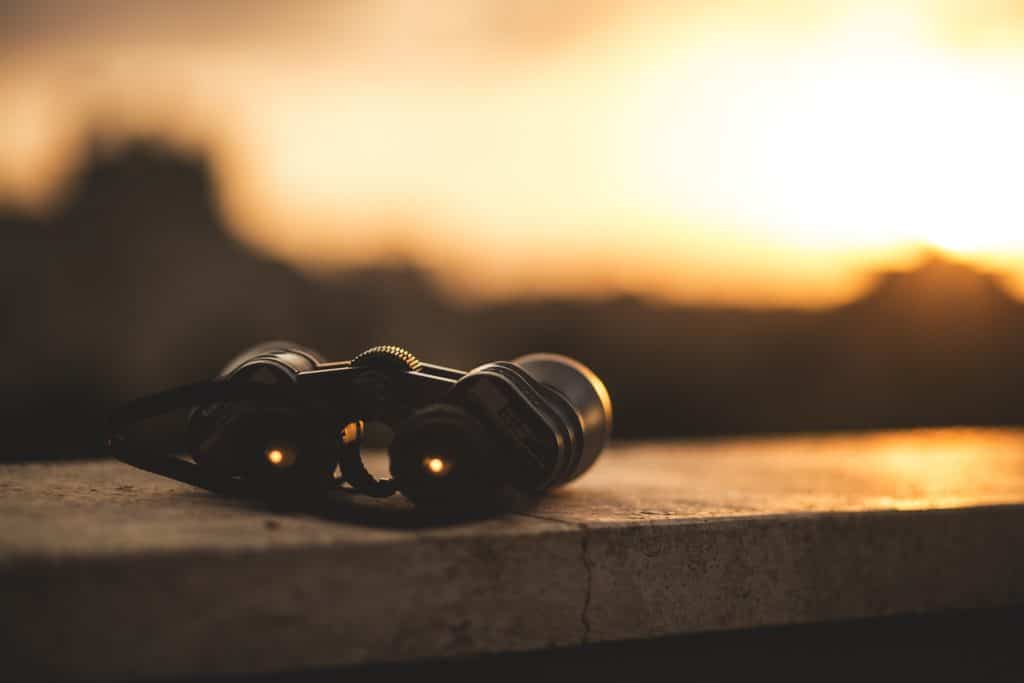
A Choice Between Roof and Porro Prism
Both roof and Porro prisms are used in different types of binoculars.
Roof prism binoculars have their glass elements in a straight line; this means that the binoculars are more comfortable and streamlined to hold. With Porro prism binoculars, the glass elements in your binoculars are not in a straight line; this becomes beneficial when a wider field of view is needed.
Consider BK7, BAK-4, or SK15 Prisms
We’re talking about the materials used for making prisms. BAK-4 prisms are the gold standard because this material can transmit light better than the others and, at the same time, lose less light. It employs the principle of total internal reflection.
Fully Multi-Coated Vs. Multi-Coated Lenses
A multi-coated lens means that the lens has its surfaces coated with UV protective coating and other treatments. A fully multi-coated lens means that both surfaces (outside and inside) have been coated with multiple layers. A fully multi-coated lens is more efficient since it enables you to see clearer images with better contrast and color-correct features.
Choose Well Made Binoculars
It’s important that you consider how the binoculars are made. Some durable and popular materials used in binoculars include magnesium alloy, which has a good strength-to-weight ratio, and aluminum alloy, which is light yet strong.
If you want your binoculars to last longer, look out for specifications such as waterproof and fog proof as you will be using them outside.
Frequently Asked Questions
What Is the Function of the Focusing Ring on the Binoculars?
The focus ring’s function is to focus on the object you intend to view. The diopter, which is found near the right eyepiece, makes up for the differences between the eyes.
Are Zoom Binoculars Worth It?
Zoom binoculars are known to give a magnification of about 30x. However, they produce images that lack sharpness and brightness.
Conclusion
You can use binoculars to view different things, including sports and astronomy. This article has illustrated some of the information you need to use your binoculars efficiently. Whether you’re using them to locate planets, spot wildlife or watch birds, following this information will help you a lot.
We have also pointed out several things to consider while buying the best binoculars. It would help if you always focused on the features and specs that matter most. The best binoculars are the ones that meet your needs.

